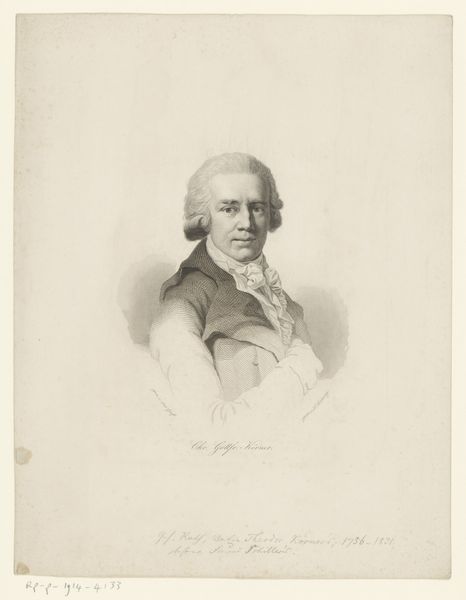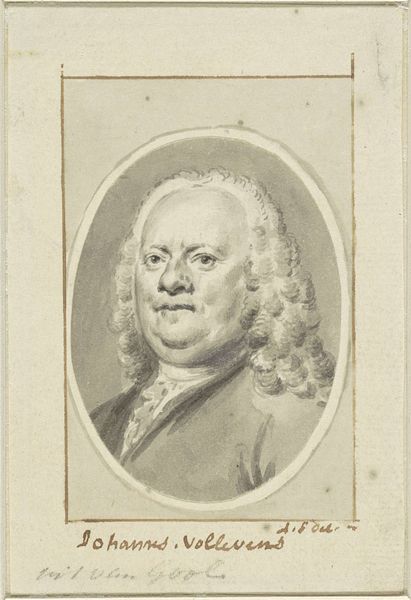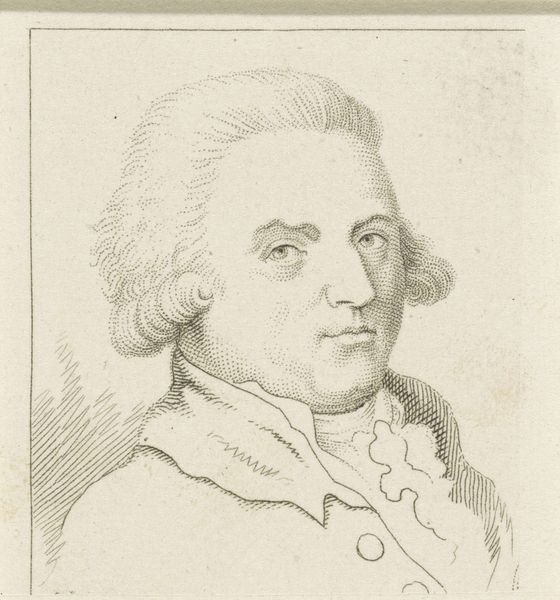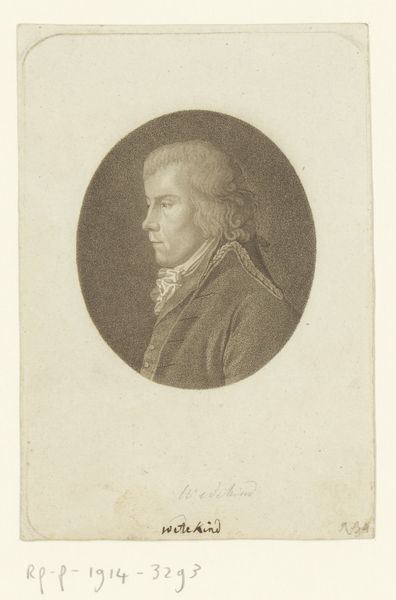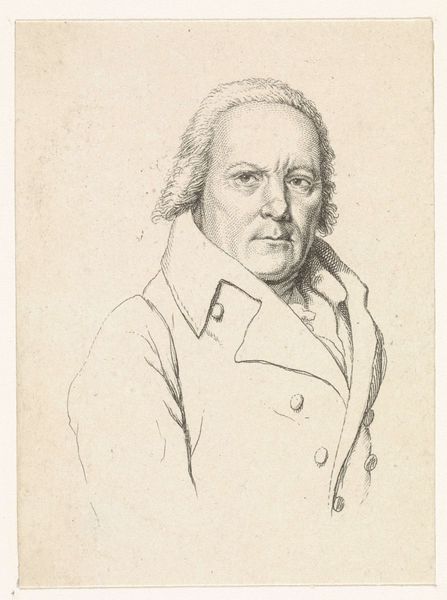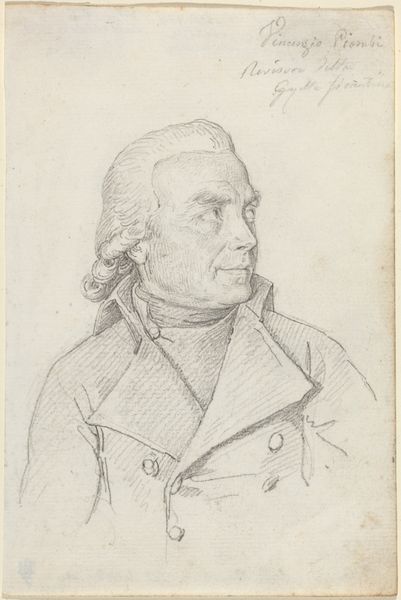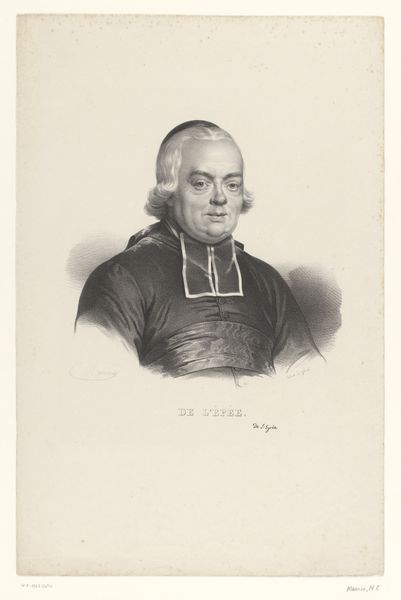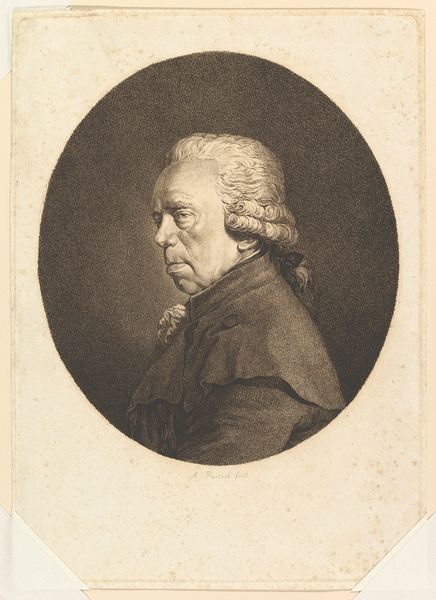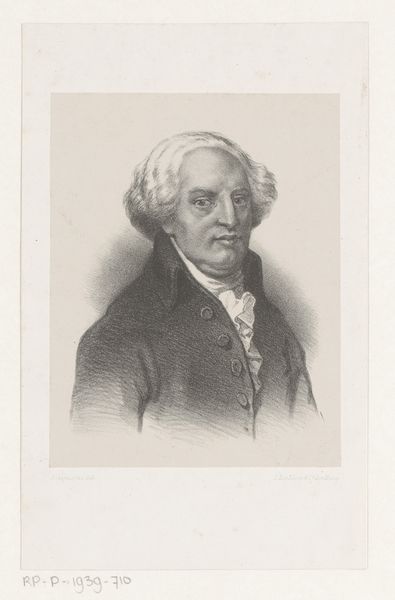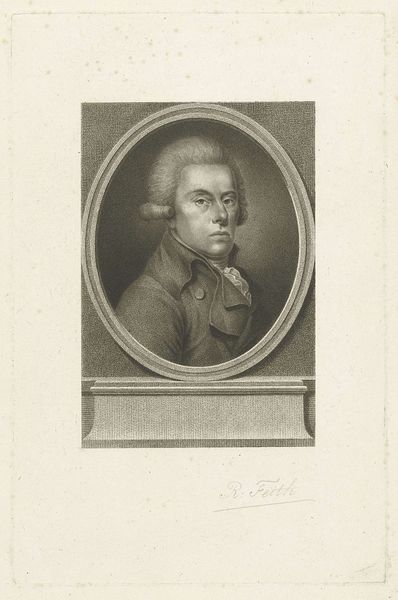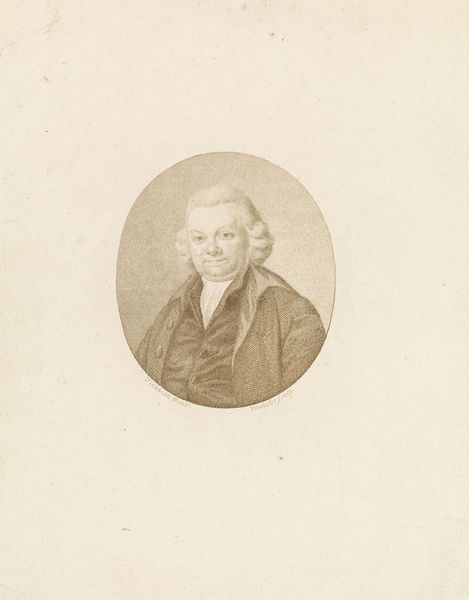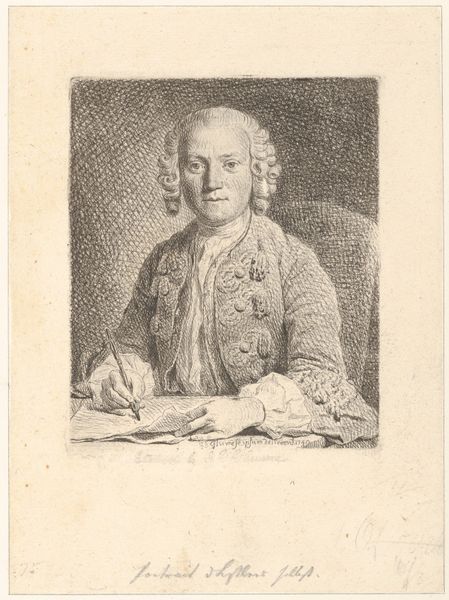
drawing, print, engraving
#
portrait
#
drawing
#
neoclacissism
# print
#
old engraving style
#
engraving
Dimensions: height 112 mm, width 95 mm
Copyright: Rijks Museum: Open Domain
Curator: Standing before us is a remarkable engraving from 1791, now held in the Rijksmuseum. It's a portrait of the painter Johann Friedrich August Tischbein, created by Mathias de Sallieth. Editor: It’s striking how immediate it feels. There’s something incredibly direct about his gaze. Though the image itself has softened with age, that intensity still pulls you right in. Curator: Consider the printmaking process of the time, though. This engraving required meticulous labor. The design had to be carved with incredible precision into a metal plate, painstakingly creating the gradations of tone that form his likeness. Editor: Right. And looking at the social context, portraiture, especially of other artists, signals a certain kind of networking and artistic legitimization, doesn't it? Tischbein, being depicted, elevates his social status but also becomes a subject through which Sallieth demonstrates his own craft and standing. It's a statement of shared community and intellectual status. Curator: Indeed. The fine lines suggest quality paper and tools were used. The artist wanted this portrait widely available in the marketplace, an exchange and negotiation of skills for social capital within their professional artistic circles. How could they market their talent without these prints? Editor: Thinking about identity, you see this careful presentation of masculine identity. The Neoclassical era idealized male figures. Note the detail in his clothing, yet also his very controlled, even reserved demeanor. What's left unspoken there, about artistic temperament and male identity? Curator: I’d say this piece illuminates how artistic communities form and sustain themselves through the careful making and sharing of images. It isn’t just about immortalizing someone’s face; it is an effort to connect and barter for esteem. Editor: Exactly. So, from a contemporary view, this engraving allows us to unpack ideas about artistic labour, the establishment of reputation and status, plus questions of identity during the late 18th century. There is much beneath the surface. Curator: The way de Sallieth utilized his technique and the print's wide distribution makes a real testament to the power of art as both social activity and commodity, and allows for the further study of its cultural impacts at the time. Editor: It is precisely the ability of this work to connect us across time, inviting these complex dialogues, that renders it timelessly fascinating.
Comments
No comments
Be the first to comment and join the conversation on the ultimate creative platform.

